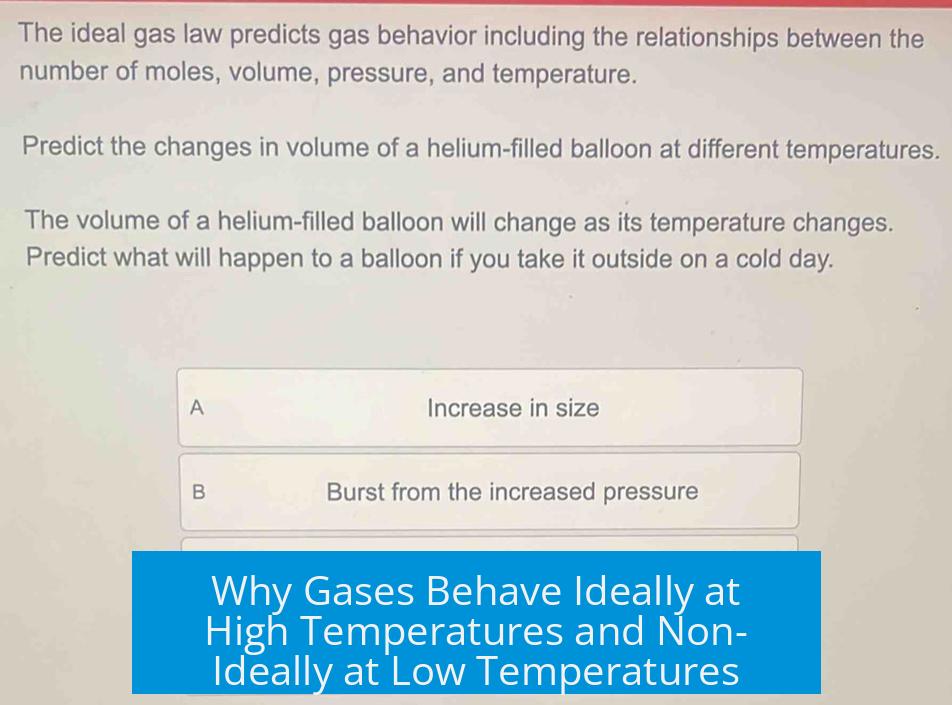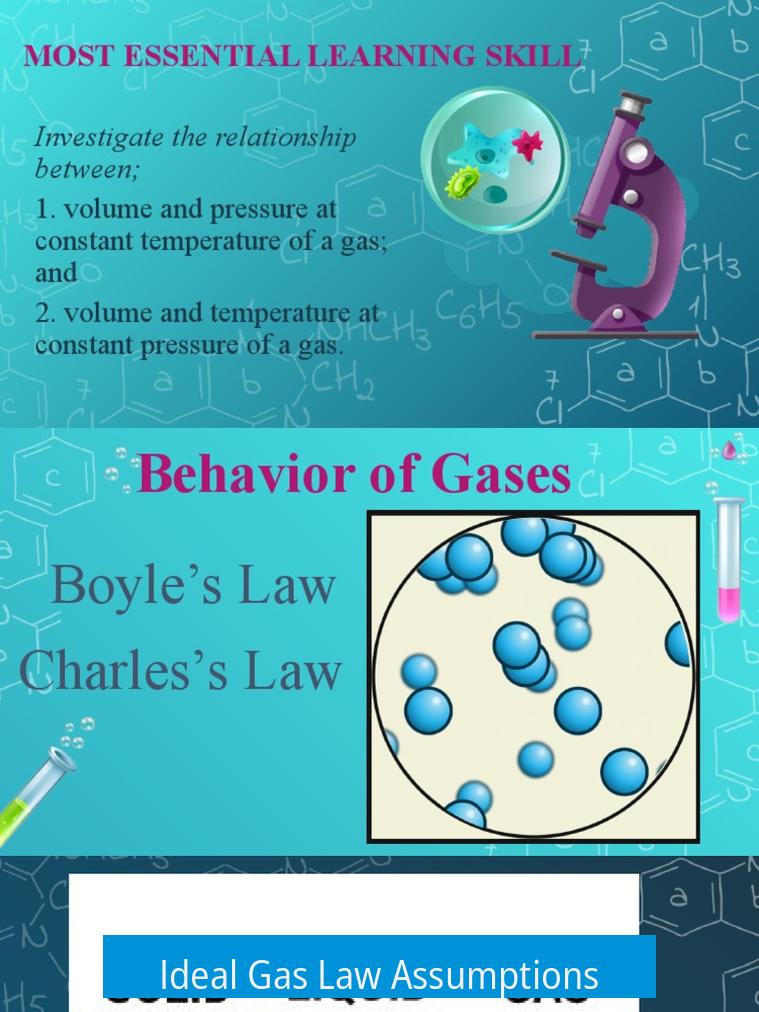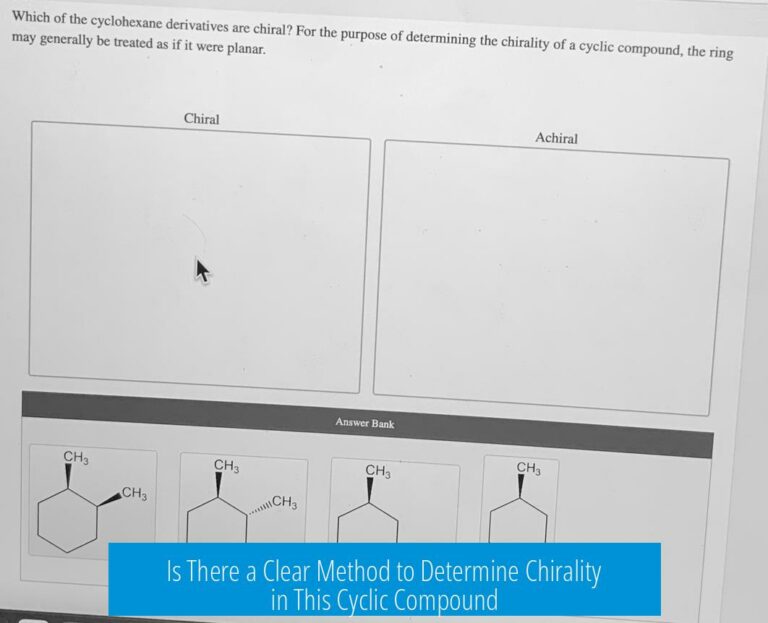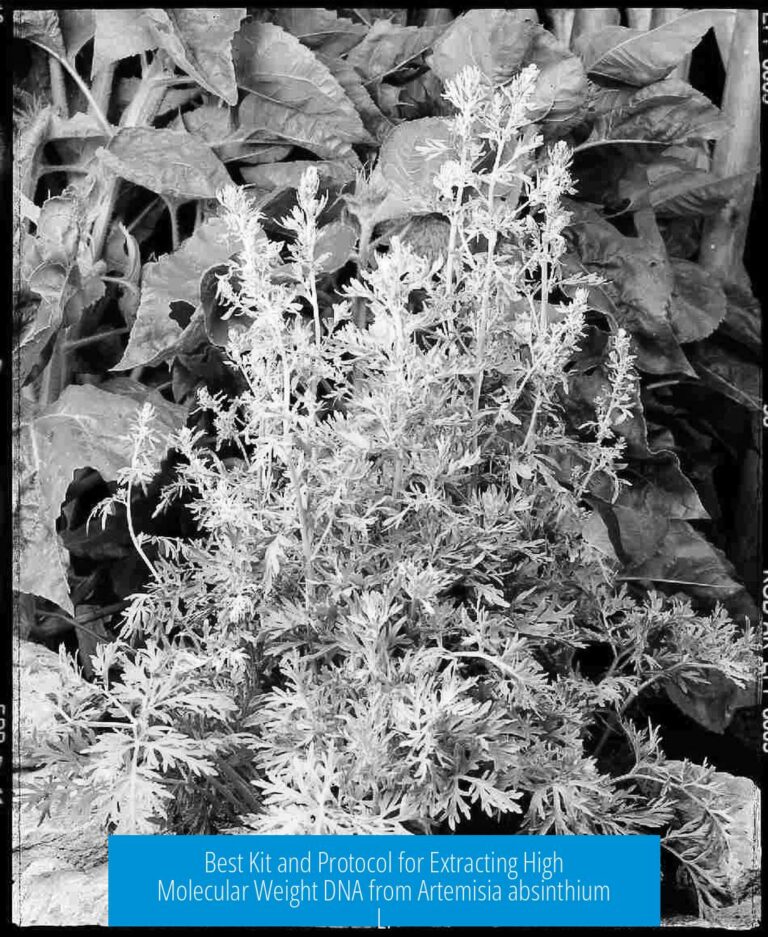Why Gases Behave Ideally at High Temperatures and Non-Ideally at Low Temperatures

Gases behave ideally at high temperatures because particle interactions become negligible owing to high kinetic energy. At low temperatures, reduced kinetic energy allows intermolecular forces to impact gas behavior, causing deviations from ideality.
Ideal Gas Law Assumptions

- Particles do not interact with each other.
- Volume occupied by particles is negligible relative to container volume.
The ideal gas law, PV = nRT, assumes no particle interactions and minimal particle volume. These assumptions hold best under conditions where particles move rapidly and are far apart.
Effect of High Temperature on Gas Behavior
High temperature increases particle kinetic energy. Fast-moving particles collide elastically and rarely influence one another beyond collisions.
- Intermolecular forces such as London dispersion, dipole-dipole, and hydrogen bonding are too weak to affect pressure.
- Elastic collisions conserve kinetic energy, maintaining ideal gas pressure.
- Gas particles behave like independent entities.
This means that at high temperatures, measured pressure and volume follow the ideal gas equation closely.
Effect of Low Temperature and High Pressure
Lower temperatures slow particle motion, increasing the time particles interact via attractive and repulsive forces.
- Intermolecular attractions cause particles to clump, reducing pressure relative to ideal predictions.
- Repulsive forces at close distances become significant under high pressure, affecting volume.
- Gas behavior deviates from ideal, requiring complex models like the Van der Waals equation.
Ultimately, at sufficient low temperature or high pressure, gases may liquefy, showing the breakdown of ideal gas assumptions.
Summary of Key Points
- High temperatures raise particle kinetic energy, minimizing intermolecular effects.
- Gas particles at high temperature collide elastically and behave independently.
- Low temperatures let particles interact more, causing deviations from ideal gas law.
- High pressure forces particles closer, amplifying non-ideal interactions.
- Under extreme low temperature or high pressure, gases may transition to liquids.





Leave a Comment